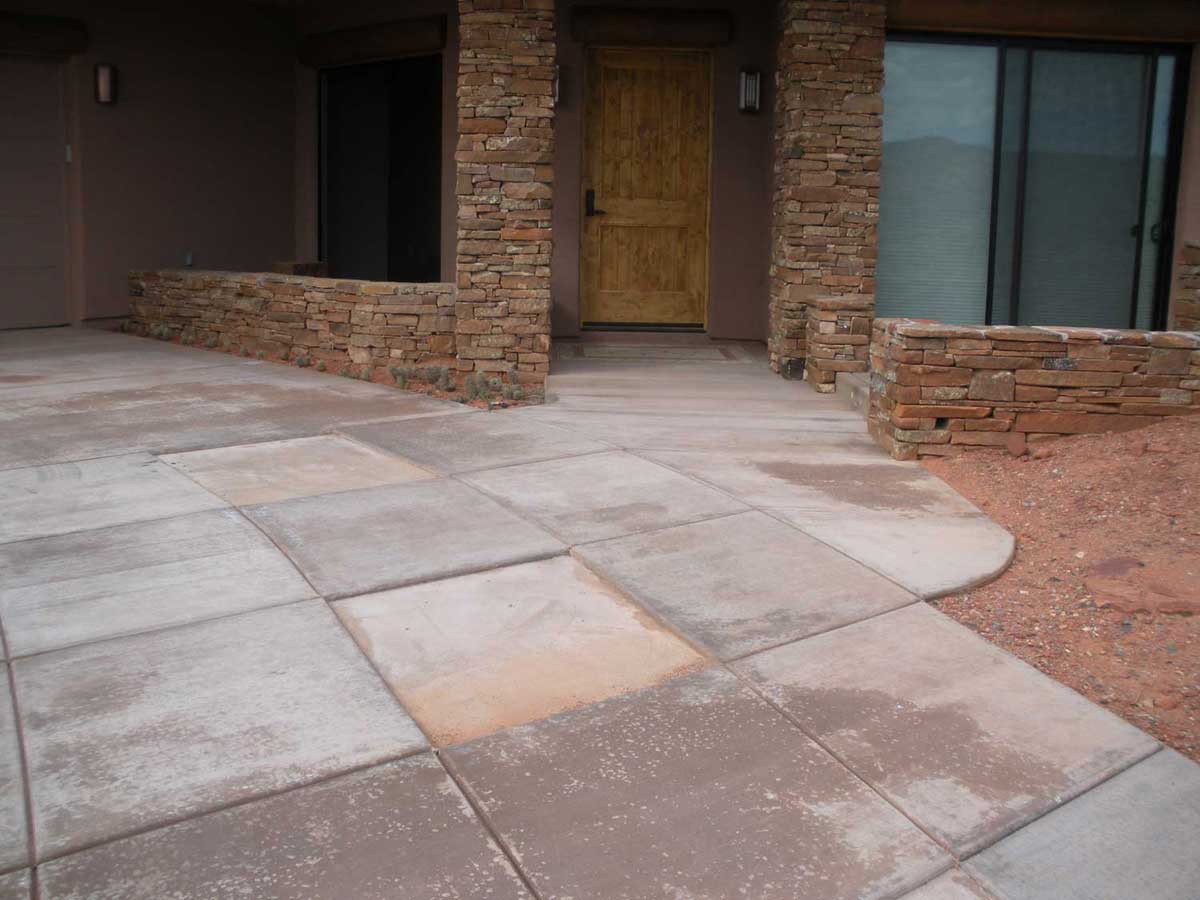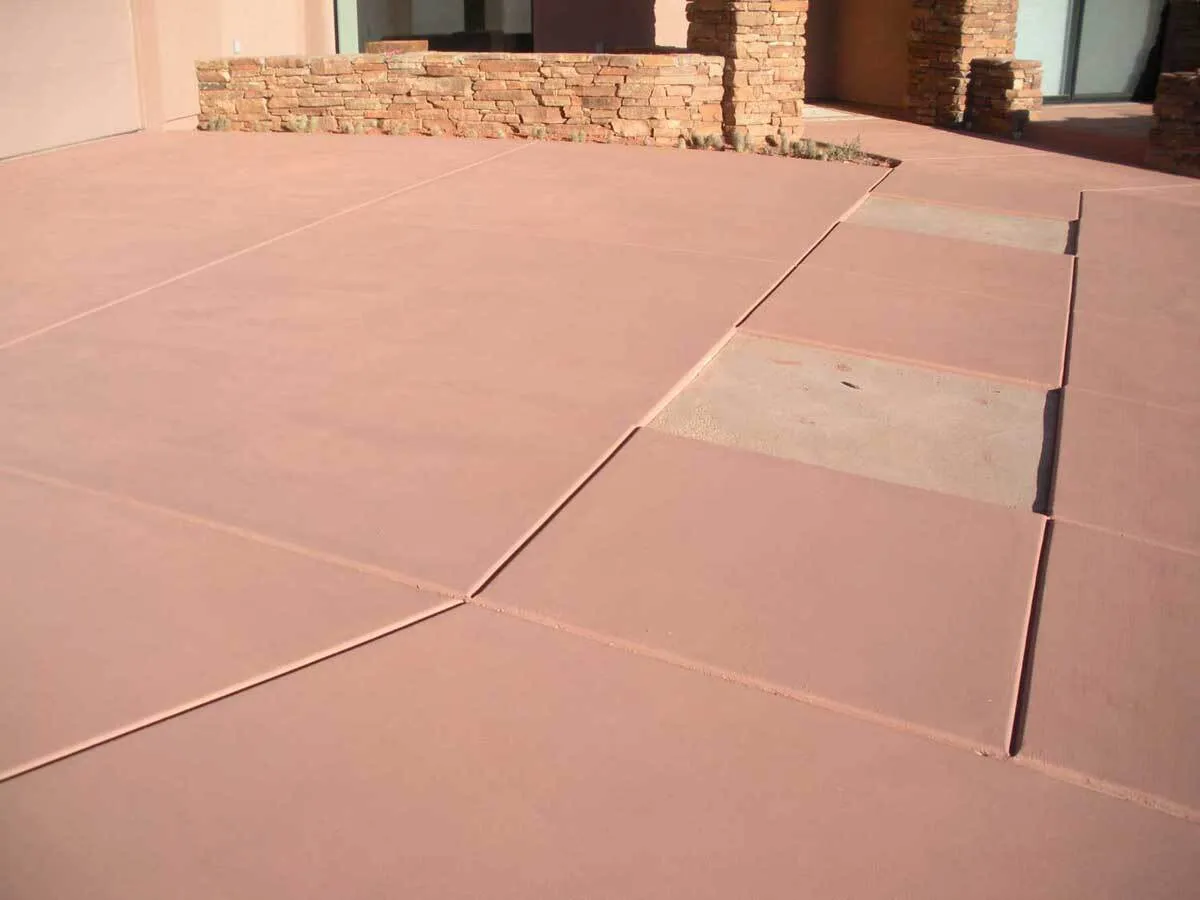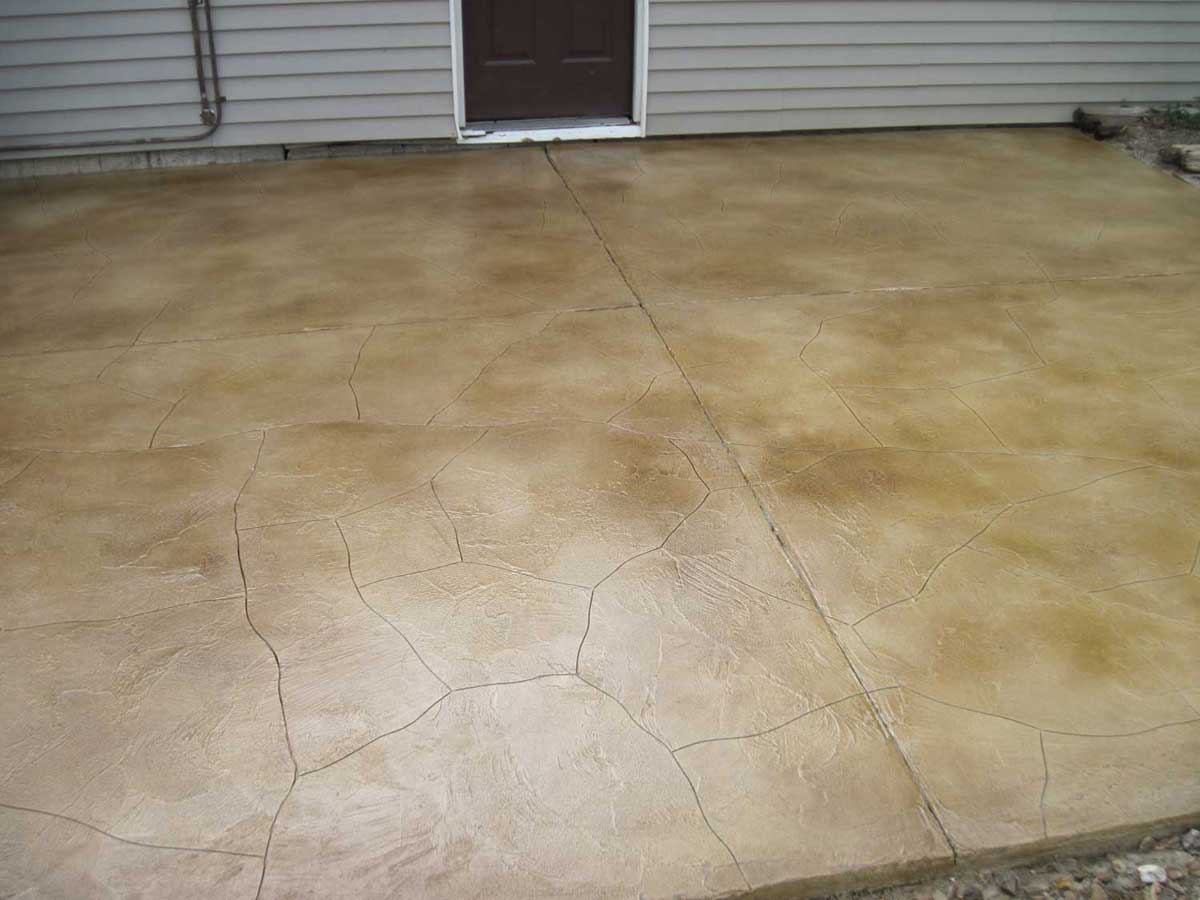Repairing A Concrete Driveway with Decorative Overlays
Cracked concrete is everywhere. For the enterprising contractor, every damaged driveway, sidewalk, or patio is a business opportunity. Find a way to make ugly concrete look good and you will find a niche in your local market. In some areas, you may be the only one offering this service. Decorative concrete resurfacing and repair is an attractive and profitable field to be in.


How and Why Concrete Deteriorates
There’ are a million ways concrete can deteriorate. The way this happened will determine if and how you can successfully resurface it. Here are just a few general ways:
General Age and Wear – All building materials wear down over time. Concrete is one of the longest lasting materials, but years of traffic and exposure will eventually cause the surface to wear down.
Environmental Wear – The freeze thaw cycle is a concrete killer in most northern climates. As the moisture within the concrete freezes and thaws, it puts pressure on the concrete that can eventually cause pop outs and spalling. Areas with a lot of rain can also experience wear. If drainage is poor, this can also lead to cracking and heaving.
Accidents and Damage – Any number of things can cause damage. Abrasion caused by dragging patio furniture, dropping a heavy object, or driving an overweight truck on the slab can all cause cracking, marks, and chipping.
Installation Issues – Bad luck or bad practices can lead to defective concrete. Poor mix design, rain, finishing with water, and just bad finishing can all result in discoloration, pop outs, and other defects.
When Can You Resurface Concrete?
Know how to pick your battles. As a general rule of thumb, if the underlying concrete is structurally sound, it can be overlaid. When repairing concrete driveway, patio, or sidewalk, inspect it carefully for weak spots and cracks. If there are issues tied to heaving or settling, it may cause the overlay to fail. Excessive moisture transmission through the concrete can also cause problems. Finally, excessive surface contamination can also cause the overlay to fail if not properly addressed. Always check the documentation for your chosen overlay for limitations.
Concrete Resurface Products
Concrete overlays come in a wide range products. In general, decorative overlays are thinner. Microtoppings and spray mixes are paper thin while stampable overlays can get up to a half inch thick. Structural overlays and underlayments, such as self leveling overlays and polishable overlays, can be much thicker. Decorative products provide just enough thickness to provide a visually appealing surface that can withstand traffic and wear. Thicker overlays must provide more structure and accommodate more deteriorated surfaces. For lightly worn or minimally damaged concrete, a decorative microtopping is generally enough. For more heavily deteriorated slabs, consider using a combination of thick overlays for structural purposes and a thinner microtopping to improve appearance.
Surface Preparation for Decorative Overlays
Surface preparation is the first of many resurface concrete steps. Surface preparation is needed to remove contaminants and create an appropriate profile for the overlay to adhere. The surface should be free of any contaminants that would keep the overlay from sticking. Loose or failing pieces of concrete, such as rock pops or chipped concrete, should also be removed.
Surface profile refers to the roughness of the concrete. The International Concrete Repair Institute sets standards known as CSP levels. The lower the level, the smoother the concrete is. For most microtoppings and thinner overlays, a mild profile of CSP 1 or 2 is all that is needed. This usually amounts to a light acid etch or scrubbing. Thicker, more substantial overlays, will require a higher CSP level that could include shot blasting or other mechanical preparation.


Designing With Decorative Overlays
Cracked concrete can be a blessing in disguise. For many homeowners, this is when they can be convinced to upgrade the appearance of their concrete. Answering calls for simple crack repair is an excellent opportunity to upsell into a decorative overlay.
When a homeowner comes to you with cracked concrete, use the cracks and existing damage to guide your design. You could simply overlay the concrete and call it a day, but cracks could reappear. Use a stencil or tape to create a stone or brick pattern that hides the cracks, even if they come back. Use your trowel to add some light texture to the final coat of microtopping for a more premium finish. This is faster and less expensive than replacing the slab. For the contractor, this means faster turnaround, less labor, and potentially higher margins. Homeowners save money while still getting quality decorative concrete and not having their property torn up.
See More

